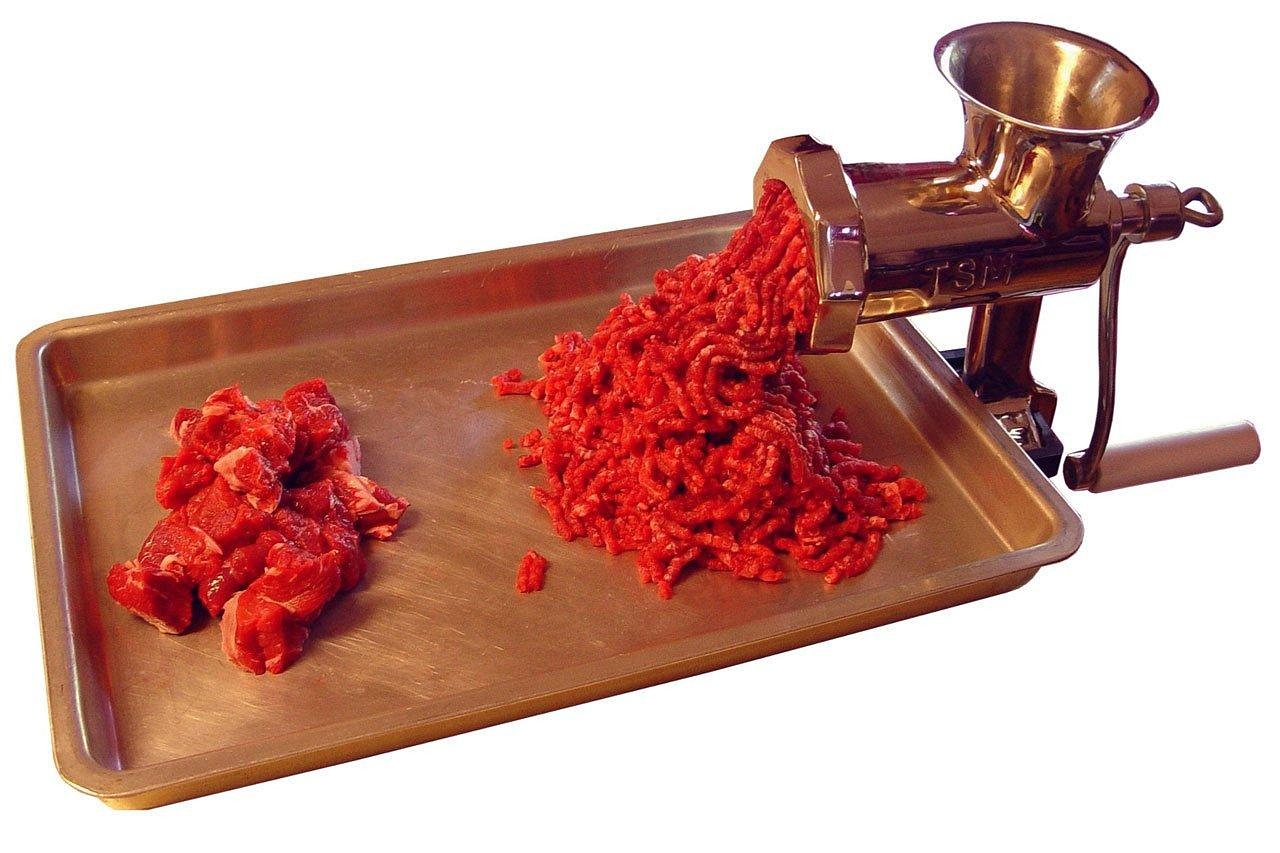Meat Grinder Vs Blender: Understanding the Fundamental Difference in Food Processing
When preparing meat at home, especially for recipes requiring specific textures like ground beef, sausage, or pâté, the choice of equipment is paramount. While both a meat grinder and a blender are kitchen appliances designed to break down food, their mechanisms, resulting textures, and suitability for raw meat processing differ radically. Understanding these differences is crucial for achieving high-quality, safe, and consistent results.
The Dedicated Tool: How a Meat Grinder Works
A dedicated meat grinder operates on a principle of shearing and extrusion, designed specifically to process fibrous animal tissue efficiently while maintaining a low temperature. This mechanism is the key differentiator that makes it superior for grinding meat.
Mechanism: Shear and Extrusion
A meat grinder uses three primary components working in sequence:
- The Auger (Worm): This spiral screw feeds the meat consistently toward the cutting mechanism.
- The Knife (Cutter): A sharp, four-bladed knife rotates against the stationary plate, slicing the meat.
- The Plate: This perforated disc determines the final texture (coarse, medium, or fine) as the meat is extruded through the holes.
This process ensures that the meat is cleanly cut and pushed out, resulting in uniform strands of ground product. The mechanical action is slow and controlled, minimizing friction and heat generation.
Output Quality and Consistency
The primary advantage of a meat grinder is the uniformity of the grind. Whether you are preparing beef for burgers or pork for sausage making, the texture is consistent across the entire batch. This consistency is vital for cooking evenly and achieving the desired mouthfeel.
Temperature Control (The Safety Factor)
Temperature control is perhaps the most critical factor when processing raw meat. Bacteria multiply rapidly in the “danger zone” (40°F to 140°F or 4°C to 60°C). A meat grinder, especially when components are chilled beforehand, keeps the meat cold. The shearing action generates minimal heat, ensuring the meat stays below 40°F, which is essential for food safety and preventing the fat from smearing.
The Versatile Tool: How a Blender Works
A blender, whether a countertop model or an immersion type, is fundamentally designed for high-speed impact and liquefaction. Its primary function is to create smooth, homogenous mixtures.
Mechanism: High-Speed Impact and Cutting
A blender uses a set of fixed or rotating blades at the bottom of a container (jar or pitcher). The blades spin at extremely high revolutions per minute (RPM), creating a vortex that pulls ingredients down and subjects them to rapid impact and cutting.
Output Quality and Consistency
When applied to meat, the blender’s high-speed action tends to chop, shred, and ultimately puree the material. It struggles to create the distinct, separated strands characteristic of ground meat. Instead, the result is often an inconsistent mixture ranging from finely shredded pieces to a pasty, emulsified mush.
The Heat Problem
Due to the intense friction generated by high-speed blades, blenders rapidly increase the temperature of their contents. When processing raw meat, this heat melts the fat, causing it to smear and bind the meat proteins together. This results in a dense, sticky paste rather than light, fluffy ground meat, and critically, it pushes the meat into the bacterial danger zone quickly.
Direct Comparison: Meat Grinder vs. Blender
| Feature | Meat Grinder | Blender | Winner for Meat Grinding |
|---|---|---|---|
| Primary Action | Shearing and Extrusion | High-Speed Impact and Liquefaction | Meat Grinder |
| Output Texture | Uniform, separated strands (minced) | Inconsistent, chopped, or pureed (pasty) | Meat Grinder |
| Temperature Control | Excellent (low friction) | Poor (high friction generates heat) | Meat Grinder |
| Best Use Case | Ground meat, sausage, pet food, bone grinding | Smoothies, sauces, soups, batters | Depends on Goal |
| Fat Management | Keeps fat cold and distinct | Melts fat, causing smearing/emulsification | Meat Grinder |
| Efficiency for Meat | High capacity, continuous processing | Low capacity, requires pulsing, prone to jamming | Meat Grinder |
Mincing vs. Pureeing
This is the core difference. A meat grinder minces—it cuts the meat cleanly into defined pieces. A blender purees—it pulverizes the meat, often breaking down the cellular structure and turning it into a paste, especially if over-processed. If your goal is to make a smooth pâté or baby food, a blender might suffice. If your goal is to make high-quality ground beef for a meatloaf or burger, the meat grinder is the only viable option.
The Food Processor Factor
It is worth noting that a food processor often falls between the two. While it uses blades like a blender, its slower speed and wider bowl allow for better control when chopping meat into small pieces. However, even a food processor cannot replicate the clean, uniform extrusion provided by a dedicated meat grinder.
Can You Grind Meat in a Blender? Techniques and Limitations
Addressing the common question, can you grind meat in a blender? The answer is technically yes, but with significant caveats regarding quality and safety.
Necessary Preparation
To attempt grinding meat in a blender, you must take extreme precautions to mitigate the heat problem:
- Partial Freezing: Cut the meat into 1-inch cubes and place them in the freezer for 30 to 45 minutes until they are firm but not rock-hard. This keeps the temperature low during processing.
- Small Batches: Process only a few ounces at a time. Overloading the blender will cause the blades to struggle and generate excessive heat.
- Pulsing Technique: Use short, sharp pulses (1-2 seconds each) rather than continuous blending. This prevents the meat from turning into a paste.
The Resulting Texture
Even with careful pulsing, the resulting texture will be closer to finely chopped or shredded meat rather than true ground meat. It is often inconsistent and may contain large, unchopped pieces mixed with mushy, over-processed sections. This method is generally only acceptable for recipes where the texture is less critical, such as certain fillings or highly seasoned dishes.
Why a Dedicated Grinder is Worth the Investment
For anyone who regularly processes meat—whether for quality control, specific dietary needs (like grinding bones for pet food, see Manual Meat Grinder Guide), or making homemade sausage—a dedicated grinder is indispensable. It ensures food safety, superior texture, and far greater efficiency than attempting to adapt a blender or food processor. If you are considering purchasing equipment, consult an electric meat grinder buying guide to find the right model for your needs.
Frequently Asked Questions (FAQ)
Q1: Is a meat grinder worth it for the average home cook?
A meat grinder is worth the investment if you prioritize the quality, freshness, and specific composition of your ground meat. It allows you to control the fat content, choose the cuts of meat, and ensure superior hygiene compared to pre-ground supermarket meat. It is essential for specific hobbies like sausage making.
Q2: Can I use a blender attachment that claims to be a “grinder”?
Some high-end blenders offer specialized attachments. These are usually small food processors or choppers and still rely on high-speed blades rather than the auger-and-plate mechanism of a true meat grinder. While they perform better than the standard blender jar, they rarely achieve the quality of a dedicated meat grinder.
Q3: What is the main risk of grinding meat in a blender?
The main risks are food safety and poor texture. The high friction of the blender blades rapidly raises the meat’s temperature, pushing it into the bacterial danger zone. Additionally, the resulting texture is often pasty due to fat smearing, which negatively impacts the final dish.
Q4: How does a meat grinder handle sinew and connective tissue compared to a blender?
A meat grinder’s sharp knife and plate system are designed to shear through sinew and connective tissue cleanly. A blender’s blades, especially when dealing with tough fibers, tend to wrap the sinew around the blade hub, causing the machine to jam or overheat, leading to inconsistent results.
Q5: What is the ideal temperature for grinding meat?
The ideal temperature for grinding meat is between 30°F and 32°F (-1°C and 0°C). The meat should be very cold, almost frozen, and the grinder components (auger, knife, and plate) should be chilled in the freezer for at least 30 minutes before use. This prevents fat smearing and ensures safety.
Choose Quality: Upgrade Your Meat Processing
If you are serious about controlling the ingredients in your kitchen and achieving professional-grade results in your ground meat and sausage, investing in a dedicated meat grinder is the clear path forward. Explore the latest models and find the perfect equipment to elevate your cooking.
References
- U.S. Department of Agriculture (USDA). Safe Handling of Ground Meat and Poultry. 2025. “USDA Guidelines for Safe Handling of Ground Meat” — This resource emphasizes the critical importance of temperature control (keeping meat below 40°F) during processing to prevent pathogen growth.
- National Sanitation Foundation (NSF). Equipment Standards for Food Preparation Devices. 2025. “NSF Standards for Food Preparation Equipment” — This document outlines the design requirements for equipment like meat grinders, focusing on cleanability and material safety to minimize cross-contamination risks in meat processing.
Last Updated on October 14, 2025 by Robert Vance

